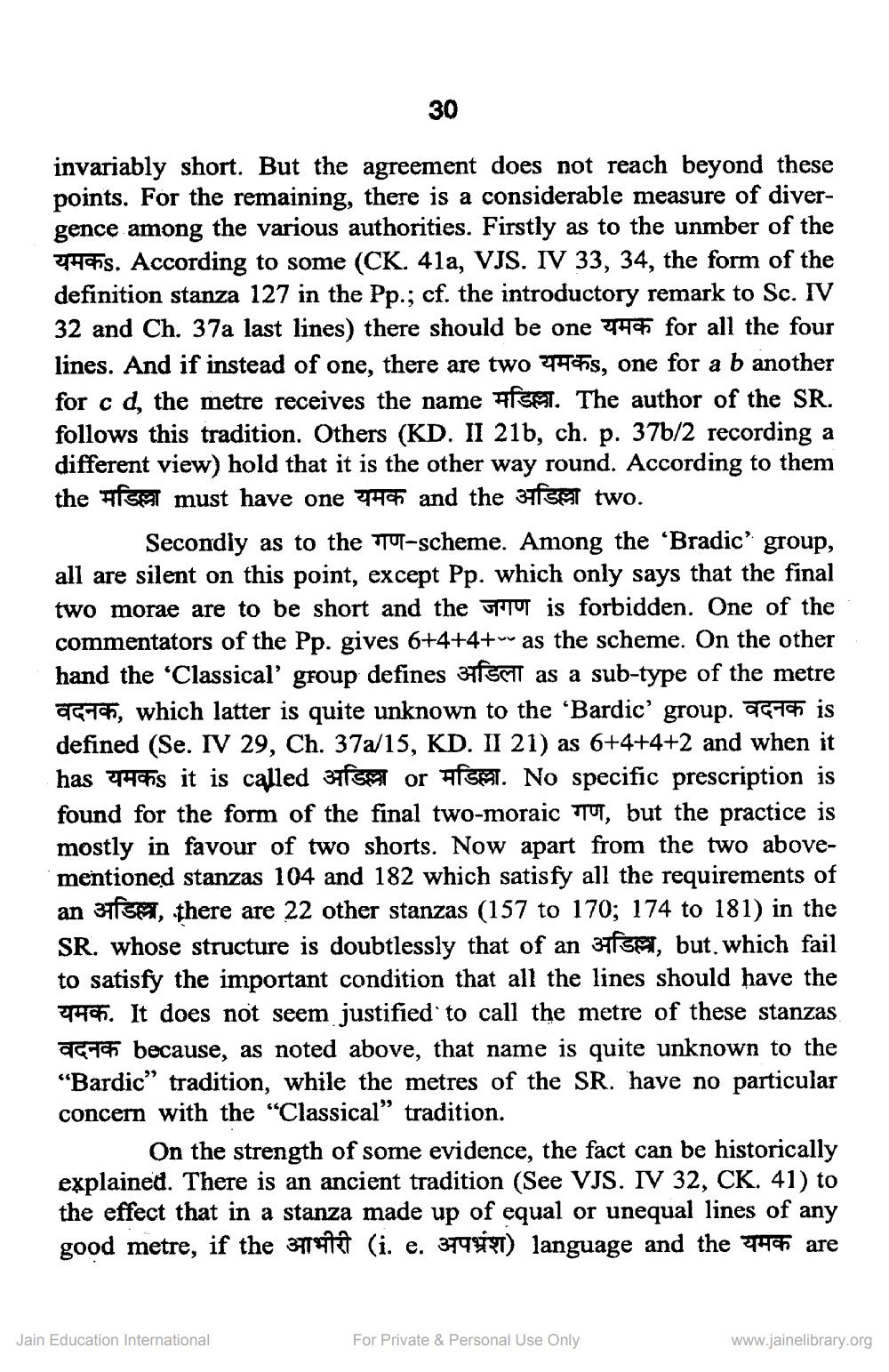________________
30
invariably short. But the agreement does not reach beyond these points. For the remaining, there is a considerable measure of divergence among the various authorities. Firstly as to the unmber of the 440s. According to some (CK. 41a, VJS. IV 33, 34, the form of the definition stanza 127 in the Pp.; cf. the introductory remark to Sc. IV 32 and Ch. 37a last lines) there should be one 445 for all the four lines. And if instead of one, there are two y s, one for a b another for c d, the metre receives the name ASM. The author of the SR. follows this tradition. Others (KD. II 21b, ch. p. 37b/2 recording a different view) hold that it is the other way round. According to them the मडिला must have one यमक and the अडिल्ला two.
Secondly as to the Tu-scheme. Among the ‘Bradic' group, all are silent on this point, except Pp. which only says that the final two morae are to be short and the out is forbidden. One of the commentators of the Pp. gives 6+4+4+-- as the scheme. On the other hand the 'Classical group defines 37fSct as a sub-type of the metre 2975, which latter is quite unknown to the ‘Bardic' group. ag7 is defined (Se. IV 29, Ch. 37a/15, KD. II 21) as 6+4+4+2 and when it has यमकs it is called अडिल्ला or मडिल्ला. No specific prescription is found for the form of the final two-moraic TUT, but the practice is mostly in favour of two shorts. Now apart from the two abovementioned stanzas 104 and 182 which satisfy all the requirements of an 31f5f, there are 22 other stanzas (157 to 170; 174 to 181) in the SR. whose structure is doubtlessly that of an 34SA, but which fail to satisfy the important condition that all the lines should have the 440. It does not seem justified to call the metre of these stanzas agh because, as noted above, that name is quite unknown to the “Bardic” tradition, while the metres of the SR. have no particular concern with the "Classical” tradition.
On the strength of some evidence, the fact can be historically explained. There is an ancient tradition (See VJS. IV 32, CK. 41) to the effect that in a stanza made up of equal or unequal lines of any good metre, if the आभीरी (i. e. अपभ्रंश) language and the यमक are
Jain Education International
For Private & Personal Use Only
www.jainelibrary.org




